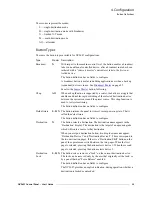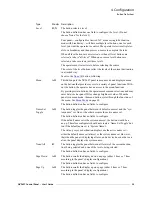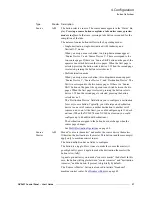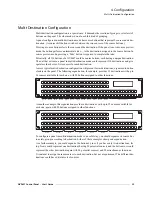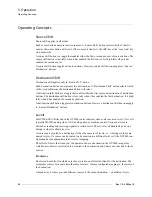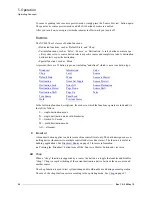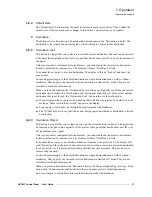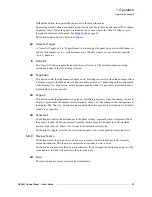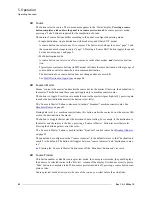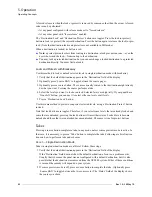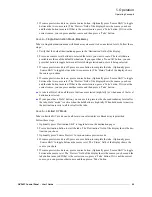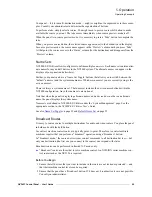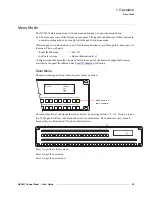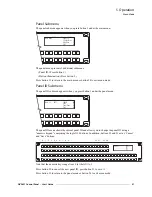
NV9607 Control Panel • User’s Guide
37
5. Operation
Operating Concepts
S, B, X
Default State
The ‘Default State’ button returns the panel to its most recent power-up state. That is called the
default state
. (It does not cause any changes to the routers, control system, or its signals.)
X
Destination
The button selects a destination. The destination name appears in the ‘Destination’ display. The
destination is the target of an upcoming take, which will route a source to that destination.
S, B, X
Destination Lock
This button is a toggle that sets or clears a
lock
on the current destination. The lock can be removed
at the panel that originally set the lock, at a panel that has the same user ID, or by a forced release at
any panel.
Unless your panel is configured for forced release, you cannot unlock or unprotect a destination
locked or protected by someone else. The display will show “NotOwner” briefly.
You cannot take a source to a locked destination. The display will read “Locked” and show the
user’s name.
Locks and protects apply to the default destination in single-destination mode, with or without
breakaway. They apply to the currently selected destination in limited X-Y mode. They are not
available in multi-destination mode.
When you lock a destination, the ‘Destination Lock’ button goes high-tally red. When you select a
destination that is locked, the ‘Destination Lock’ button goes high-tally red. If you select another
destination that is not locked, the ‘Destination Lock’ button returns to low-tally amber.
S
If you attempt to take a source to a destination that is locked (or protected by another user), the
message “Some levels did not switch” appears in the display.
S
Locks apply to selected levels in single-destination mode with breakaway.
S
The NV9607 provides no explicit indication, during operation, whether a destination is locked
or unlocked.
S, B, X
Destination Protect
This button is a toggle that sets or clears a
protect
on the current destination device. The protect can
be removed at the panel that originally set the protect, at any panel that has the same user ID, or by
a forced release at any panel.
Unless your panel is configured for forced release, you cannot unlock or unprotect a destination
locked or protected by someone else. The display will show “NotOwner” briefly.
You cannot take a source to a protected destination if someone else protected it. The display will
read “Protect” and show the user’s name. However, you
can
take a source to a protected destination
if you protected it or it is protected at another panel that has your username. Doing so does not
remove the protection.
Locks and protects apply to the default destination in single-destination mode, with or without
breakaway. They apply to the currently selected destination in limited X-Y mode. They are not
available in multi-destination mode.
When you protect a destination, the ‘Destination Protect’ button goes high-tally green. Any ‘Desti-
nation Lock’ button remains unaffected. Note that you cannot protect a locked destination.
S
Protects apply to selected levels in single-destination mode with breakaway.
Summary of Contents for NV9606
Page 10: ...x Rev 1 0 21 May 10 Table of Contents ...
Page 20: ...10 Rev 1 0 21 May 10 2 Introduction Other NV9607 Functions ...
Page 40: ...30 Rev 1 0 21 May 10 4 Configuration Multi Destination Configuration ...
Page 66: ...56 Rev 1 0 25 May 10 5 Operation Setup Mode ...
Page 72: ...62 Rev 1 1 21 May 10 6 GPIO Configuring Inputs ...
Page 82: ...72 Rev 1 0 21 May 10 8 Misc Topics Power Cord Retention ...
Page 90: ...80 Rev 1 0 18 Aug 10 Index ...

